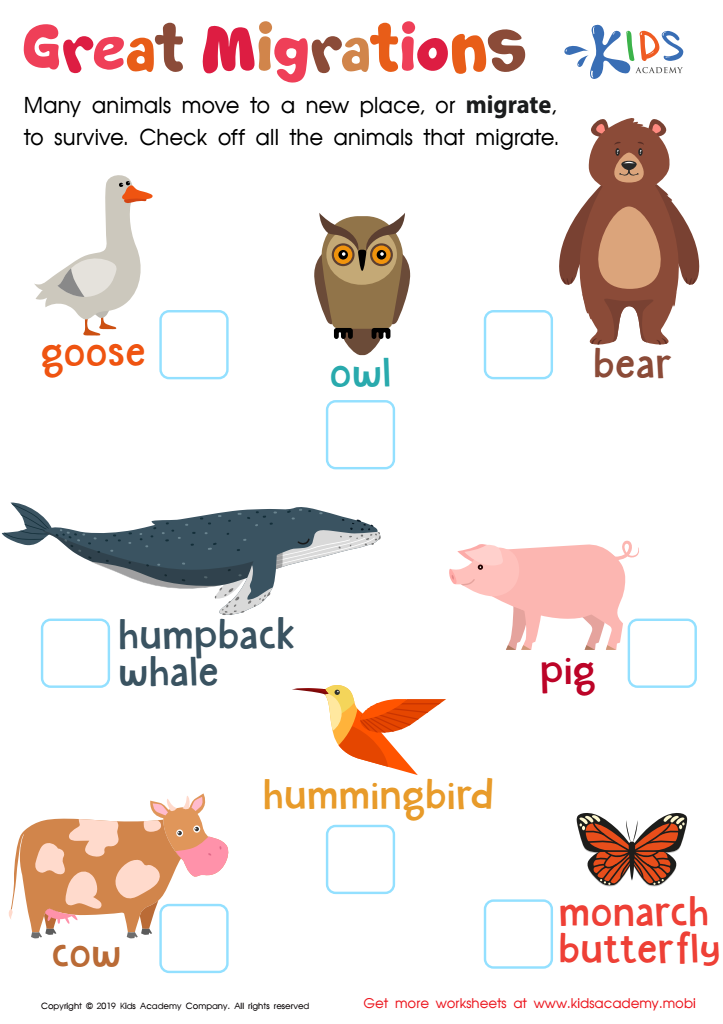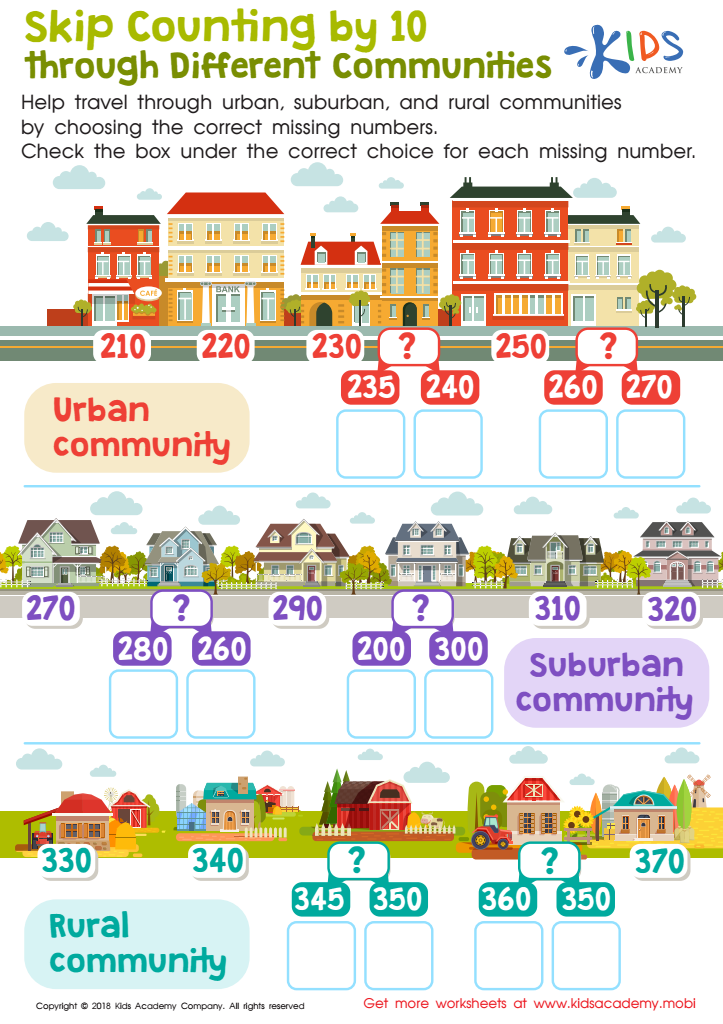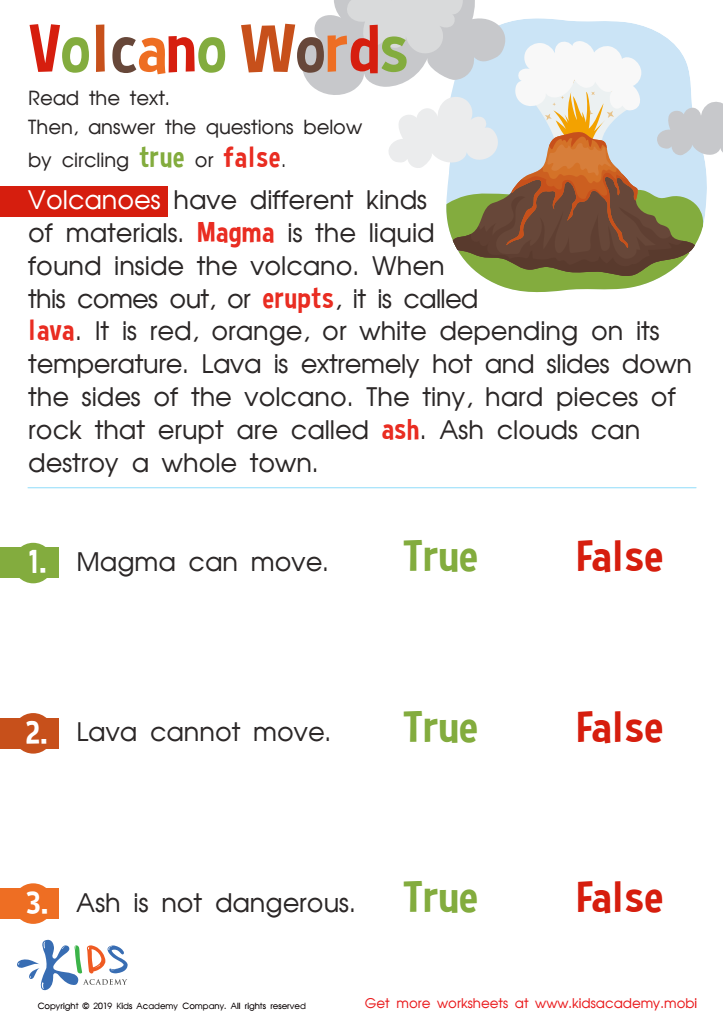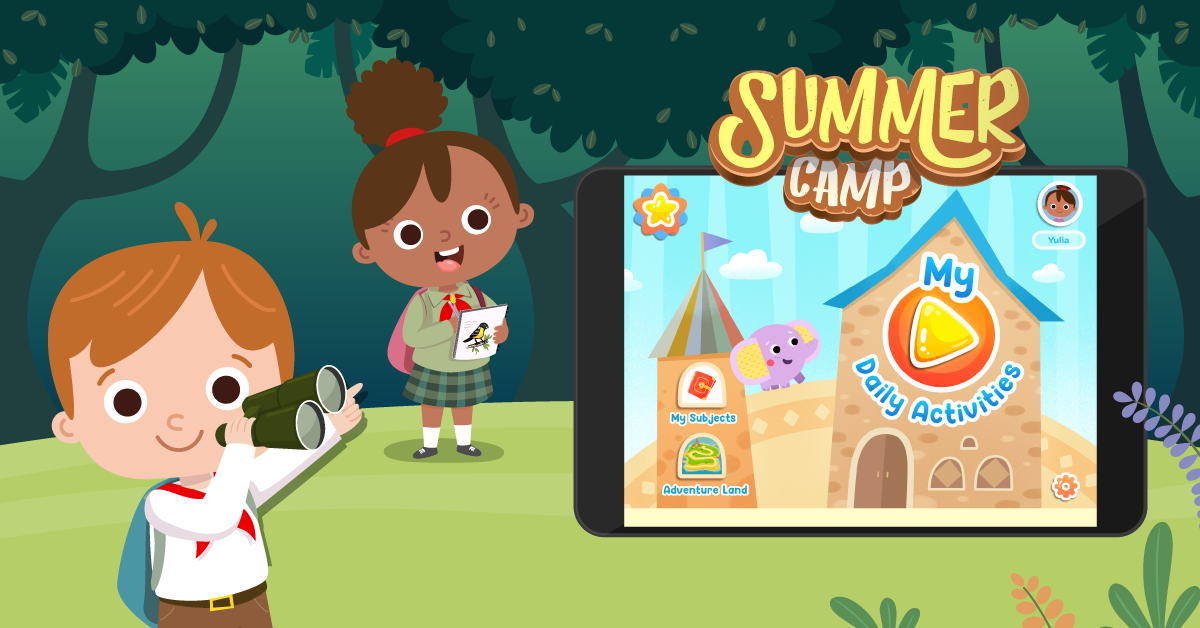Learning geography Worksheets for Kids
3 filtered results
-
From - To
Geography worksheets are essential for student learning, offering data and tasks on continents, countries, capitals, and natural features. They help students learn geography interactively by doing activities like mapping, identifying climates, and recognizing landmarks. Worksheets promote experiential learning and critical thinking, as students analyze, problem-solve, and connect locations, enhancing spatial awareness. They support solo or group work, encouraging teamwork and knowledge exchange. Geography worksheets build cognitive skills useful in academics and life.
(Characters without spaces: 700)


Great Migrations Worksheet


Skip Counting by 10 through Different Communities Worksheet


Volcano Words Worksheet
Question/Answer
How to test a Kindergarten student’s Learning geography skills?
To test a Kindergarten student's geography skills, use interactive and visual methods such as simple map puzzles focusing on continents, oceans, and basic landforms. Incorporate engaging activities like matching games with symbols and landmarks, and storytelling with globe exploration to recognize and name places. Keep assessments age-appropriate, emphasizing recognition, naming, and basic understanding of geographical concepts.
What are some effective activities to train students’ Learning geography skill when teaching them about Plants and Animals?
To train students’ geography skills in the context of plants and animals, engaging activities include creating interactive maps highlighting various species' habitats, engaging in virtual field trips to different ecosystems, organizing scavenger hunts for facts about global biodiversity, and developing projects that require research on native plants and animals of specific regions. These activities promote spatial thinking and environmental awareness.
What does the Learning geography skill mean when it comes to Kindergarten Plants and Animals learning?
The Learning geography skill in the context of Kindergarten Plants and Animals learning refers to teaching young children basic concepts about the natural world, including understanding where different plants and animals live. It involves introducing them to habitats, ecosystems, and how location affects the life and characteristics of organisms, helping them recognize the diversity of life on Earth.
 Assign to My Students
Assign to My Students








%20(1).jpg)











